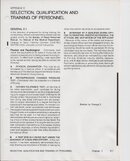Thirteen to one is a huge, enormous ratio for something of this nature, whatever it is they are measuring. The lack of any kind of explanation makes the numbers meaningless.
I think most divers understand that there is a very wide range of susceptibility to DCS and O2 toxicity, a substantial variability among people and for each individual depending on all kinds things, most of which can't be predicted or measured with any accuracy. That's why 'pushing the tables' has always been a very bad thing to do.
I'm not sure how many people still use the tables, but even those trusting souls who think a battery powered device is an infallible authority probably know that you should never approach the limits set by a computer. Extra safety stop time and other hedges are, I hope, seen as an absolute necessity. Of course, there is no shortage of fools in evey kind of activity.
There are also different algorithms used by computer manufacturers, so a substantial safety buffer is set by any sane diver, except in emergency situations. But thirteen to one? Maybe somebody forgot a decimal, misplacing it along with the name(s) of what was being measured.





